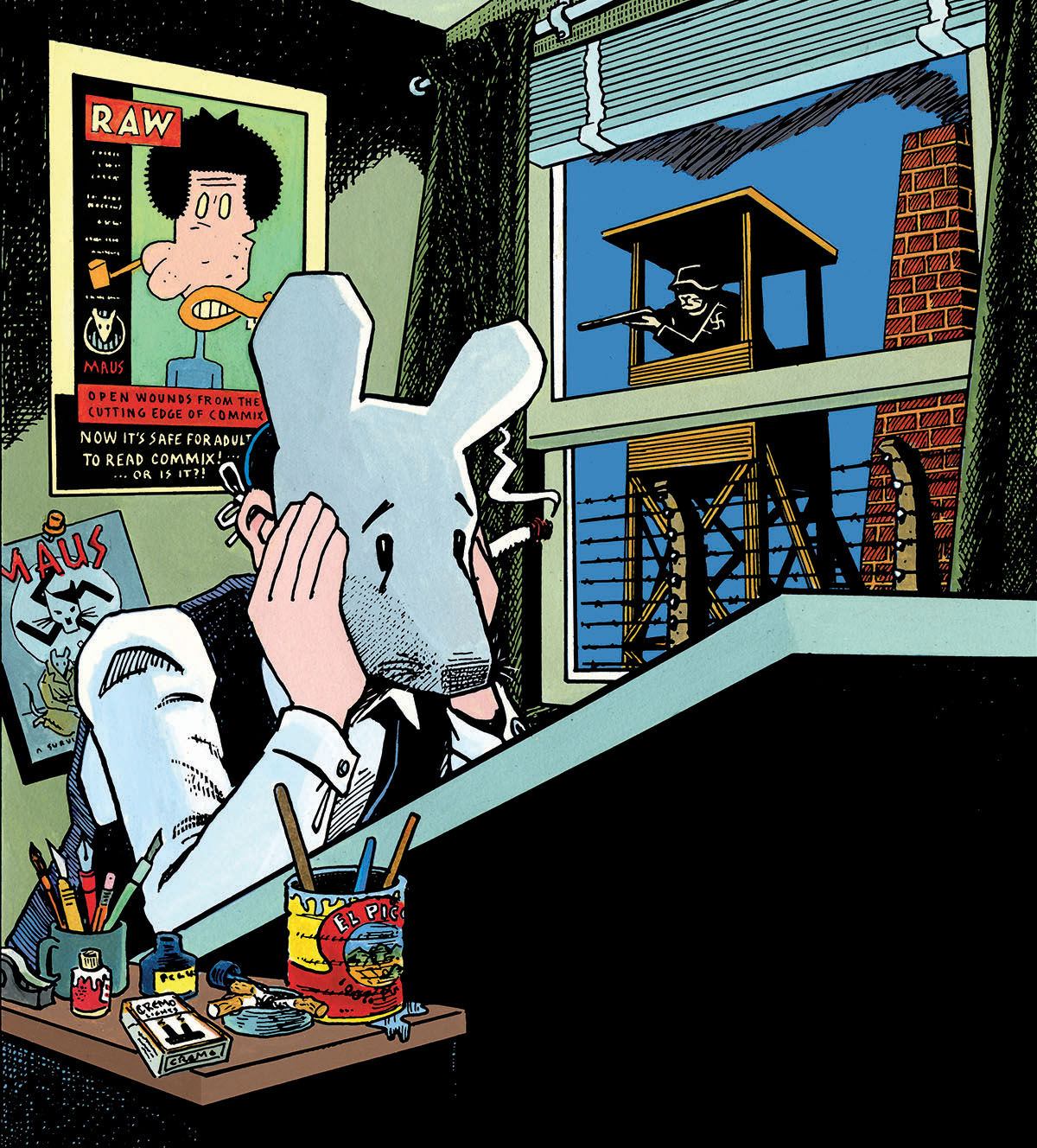Art Spiegelman Talks “What the %@&*! Happened to Comics?”

Art Spiegelman, Self-Portrait with Maus Mask, 1989. Copyright © 1989 by Art Spiegelman. Used by permission of the artist and The Wylie Agency LLC.
They call him “the father of the modern graphic novel,” but Art Spiegelman, best known as the Pulitzer Prize-winning author and artist of Maus: A Survivor’s Tale, “demands a DNA test.”
The iconic comic cartoonist presented at a lecture on Friday at Harvard’s Sanders Theatre titled “What the %@&*! Happened to Comics?” hosted by Celebrity Series of Boston. Spiegelman took the audience through an illustrated history of comics, from back when “comics were like Grand Theft Auto,” to his own discovery of Mad magazine, to what he thinks of today’s graphic novels.
Here are a few things we learned from Art Spiegelman’s talk:
There Are Comics, and Then There Are “Co-mix”
Instead of “comics,” Spiegelman prefers “co-mix,” art accompanied by brief text. By definition, he points out, a comic strip is a narrative of cartoons. And when Spiegelman talks about comics, he distinguishes them from works like that of pop artist Roy Lichtenstein, who, he says, “did no more for comics than [Andy] Warhol did for soup.”
Spiegelman also distinguishes between “sophisticated” and “unsophisticated” comics. Among the unsophisticated are the cheap comics his father bought him as a kid that “caused juvenile delinquency.” What then, were sophisticated comics? Well, “Little Lulu” and “Donald Duck,” unlike Marvel comics, he argues, possessed “shifts and emotion and soul searching.”
“Comics Are Time Turned into Space.”
For Spiegelman, a comic is all about the structure of the page. Sequencing, the arrangement of panels in the comic, give the story its past, present, and future.
Spiegelman himself is a master of this. In Maus, he seamlessly transitions between the present—a series of conversations between Art and his father, Vladek—to the past—Vladek’s experiences during the Holocaust.
“Remember, It’s Only Lines on Paper, Folks.”—Robert Crumb
“But of course, for a comic, they’re so much more,” says Spiegelman. Maus is a perfect example, and on Friday he showed other works that prove how powerful comics can be.
Take, for instance, Spiegelman’s many notable New Yorker covers over the years, including the magazine’s “In the Shadow of No Towers” 9/11 cover. On Friday, he discussed the cover he made for the February 15, 1993 issue. Depicting a Hasidic man kissing a black West Indian woman—referencing the 1991 Crown Heights riot—the work sparked plenty of controversy and commentary.
“The Future of Comics Is in the Past.”
After taking the audience through an illustrated history of comics—which spanned “Dick Tracy,” “Little Orphan Annie,” “Li’l Abner,” “Peanuts,” and the “critical mass” that comics hit in 2000—Spiegelman concluded that the “future of comics is in the past.”
The sentiment seems appropriate, since his work has always dealt with time and history. In one sequence shown in Friday’s presentation, Spiegelman showed himself in conversation with his own son, while quite literally “running from the shadow of a monument he built for his father.”
Will We Ever See a Movie Version of Maus?
Not if Spiegelman can help it. Despite the fiscal success of Marvel’s movies and critical acclaim for films like Persepolis, Spiegelman just doesn’t see a Maus movie maintaining the same soul and intricacies as the graphic novel has on paper.
“The book is encased in glass,” he says, “with a label that reads, ‘Break in case of economic emergency.'”


